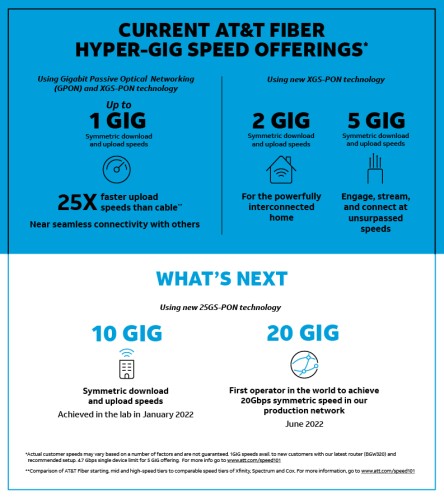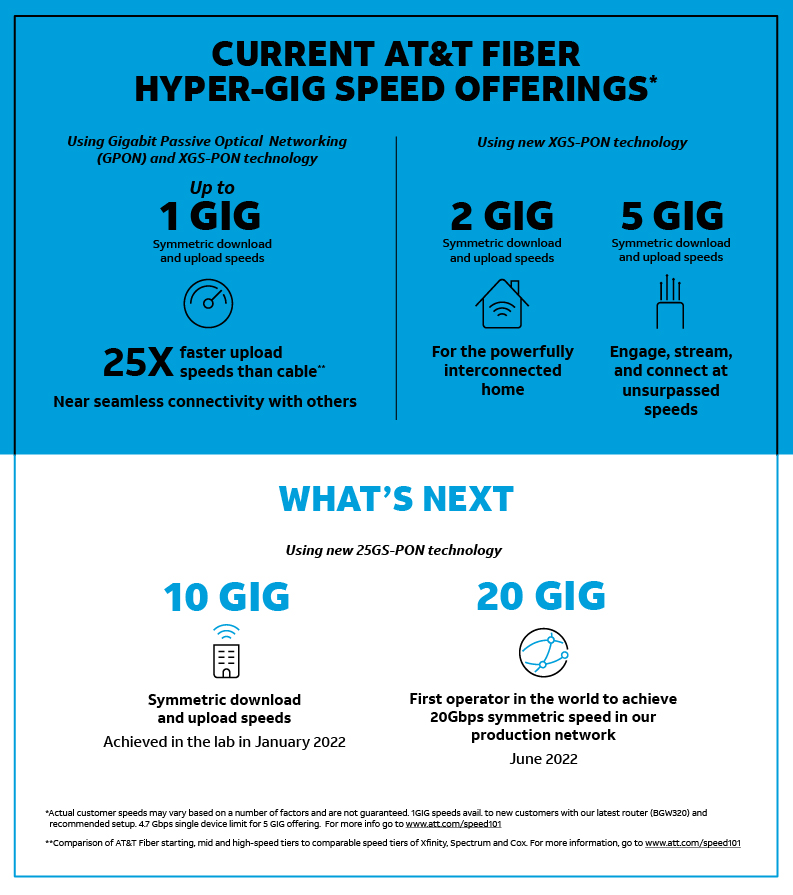
Are GPON Symmetrical Speeds Available?
Are you curious to know if GPON symmetrical speeds are available? Well, let's dive in and find out! Imagine having lightning-fast internet where your upload and download speeds are equally impressive. Sounds too good to be true, right? In this article, we will explore the world of GPON technology and whether symmetrical speeds are a possibility. So, buckle up and get ready to learn all about it!
Now, you might be wondering what GPON actually means. GPON stands for Gigabit Passive Optical Network, which is a fancy term for an advanced fiber-optic communication system. In simpler terms, it's a technology that brings super-fast internet to your home or office. But here's the catch – traditionally, GPON networks have offered asymmetrical speeds, which means that the download speed is faster than the upload speed. So, does that mean symmetrical speeds are out of the question?
Well, hold on to your seats because there's good news! It turns out that GPON symmetrical speeds are indeed possible. In recent years, advancements in technology have made it feasible to achieve equal download and upload speeds using GPON networks. This means that you can enjoy lightning-fast internet for both downloading your favorite movies and uploading your own videos or photos. So, whether you're a gamer, a content creator, or simply someone who wants a seamless online experience, symmetrical speeds might be just what you're looking for.
Get ready to unlock the full potential of your internet connection as we delve deeper into the world of GPON symmetrical speeds. From understanding the benefits to exploring the implementation challenges, we'll cover it all. So, stay tuned and prepare to be amazed by the wonders of this cutting-edge technology. Let's get started on this exciting journey to discover the answer to the question, "Are GPON symmetrical speeds available?"

Are GPON Symmetrical Speeds Available?
In the world of broadband internet, one of the questions that often arises is whether GPON (Gigabit Passive Optical Network) offers symmetrical speeds. This article aims to provide you with a comprehensive understanding of GPON technology and shed light on the availability of symmetrical speeds. With a focus on simplicity and accessibility, we will explore the intricacies of GPON, delve into the concept of symmetrical speeds, and uncover the current status of their availability.
The Basics of GPON Technology
Before we dive into the world of symmetrical speeds, let's take a moment to understand the basics of GPON technology. GPON is a form of fiber-optic broadband connection that leverages a passive optical network (PON) architecture to deliver high-speed internet access. It utilizes optical cables and passive devices to transmit and receive data over long distances.
GPON networks are capable of providing impressive download and upload speeds compared to traditional copper-based connections. With the ability to deliver speeds of up to 2.5 Gbps downstream and 1.25 Gbps upstream, GPON has emerged as a popular choice for both residential and commercial users.
The Concept of Symmetrical Speeds
In the context of internet speeds, symmetrical speeds refer to a broadband connection that provides the same upload and download speeds. It means that users can enjoy seamless and balanced data transfer in both directions.
The availability of symmetrical speeds has several advantages. It allows for efficient data sharing, seamless video conferencing, and optimal performance in cloud-based applications. For businesses, symmetrical speeds are particularly important as they often require fast and reliable data transfer in both directions.
Current Availability of Symmetrical Speeds in GPON
While GPON technology enables impressive download speeds, achieving symmetrical speeds is currently not widely available. Most GPON deployments prioritize download speeds over upload speeds to cater to the typical internet usage patterns of residential users.
However, it is worth noting that there are alternative fiber-optic technologies, such as XGS-PON, that do offer symmetrical speeds. XGS-PON takes the capabilities of GPON a step further, offering symmetric speeds of up to 10 Gbps. This technology is better suited for scenarios where symmetrical speeds are a necessity, such as businesses that heavily rely on cloud services or require efficient data sharing.
As the demand for symmetrical speeds grows and technology continues to evolve, there is a possibility that GPON networks will offer symmetrical speeds in the future. However, it currently remains more common for businesses to seek out alternative fiber-optic technologies that cater specifically to their symmetrical speed requirements.
The Advantages of GPON versus Other Technologies
Beyond the availability of symmetrical speeds, GPON is a compelling option due to its numerous advantages over other broadband technologies. Let's explore some of the key benefits of GPON:
1. High Bandwidth Capacity
GPON networks have the ability to support a large number of users simultaneously, making them ideal for densely populated areas or buildings with many tenants. The high bandwidth capacity ensures that everyone can enjoy fast and reliable internet access.
2. Lower Latency
Latency refers to the delay between when a request is made and when a response is received. GPON networks offer low latency, enabling real-time and interactive experiences such as online gaming and video conferencing without significant delays or buffering.
3. Security and Reliability
GPON networks are highly secure and reliable. The use of optical fiber cables makes them less susceptible to interference or signal degradation caused by external factors. This reliability is crucial for businesses and users looking for a stable and consistent internet connection.
4. Cost-Effectiveness
GPON infrastructure is cost-effective compared to other fiber-optic alternatives. The passive optical components reduce the need for active equipment, making deployment and maintenance more affordable. This cost-effectiveness allows internet service providers to offer competitive pricing to end-users.
5. Future-Proofing
GPON networks provide a robust and future-proof solution for broadband connectivity. The high-speed capabilities and scalability ensure that infrastructure investments can cater to the growing demands of users and emerging technologies for years to come.
Conclusion
While symmetrical speeds are not widely available in GPON networks at present, GPON technology offers numerous benefits and impressive download speeds. For users seeking symmetrical speeds, alternative fiber-optic technologies like XGS-PON may be a more suitable option. However, it is essential to consider individual requirements and usage patterns when selecting a broadband connection. Whether it's GPON or another technology, the key is finding a solution that meets your specific needs for reliable, high-speed internet access.
Key Takeaways: Are GPON symmetrical speeds available?
1. GPON (Gigabit Passive Optical Network) has asymmetrical speeds, meaning the download and upload speeds are not equal.
2. GPON technology typically provides faster download speeds compared to upload speeds.
3. For example, a GPON connection may offer download speeds of up to 1000 Mbps but upload speeds of only 100 Mbps.
4. Symmetrical speeds, where upload and download speeds are the same, are more commonly found in technologies like Ethernet.
5. However, there are other fiber optic technologies, like XGS-PON, that offer symmetrical speeds, but they are not as widely adopted as GPON.
Frequently Asked Questions
Below are some common questions related to GPON symmetrical speeds and their availability.
What are GPON symmetrical speeds?
GPON symmetrical speeds refer to the ability of a Gigabit Passive Optical Network (GPON) to provide the same upload and download speeds for internet connections. This means that the data transfer rates for both uploading and downloading are equal. In other words, if you have a symmetrical speed connection of 1Gbps, you can upload and download data at a rate of 1 gigabit per second.
Unlike asymmetrical speeds, where upload and download speeds differ, symmetrical speeds offer a balanced approach, making it ideal for activities like video conferencing, file-sharing, cloud computing, and online gaming, where fast and reliable upload speeds are required.
Why are symmetrical speeds important for certain applications?
Symmetrical speeds are crucial for specific applications that heavily rely on rapid and consistent data uploads. For example, in professions such as graphic design, software development, or video production, where large files need to be sent to clients or colleagues, symmetrical speeds ensure the efficient transfer of data.
Moreover, symmetrical speeds can enhance user experience for activities like online gaming, streaming high-definition videos, or video conferencing. These applications require a continuous and stable data flow in both directions, making symmetrical speeds an essential factor for smooth and uninterrupted performance.
Are GPON symmetrical speeds available for residential users?
GPON symmetrical speeds are typically more common in commercial or enterprise settings rather than residential environments. Residential internet plans often prioritize faster download speeds over upload speeds since most typical online activities rely heavily on downloading data, such as streaming videos or browsing websites. As a result, residential internet plans usually offer asymmetrical speeds.
However, some internet service providers (ISPs) may offer symmetrical speeds for residential users as an option, particularly for customers with specific requirements like home-based businesses or those with a need for faster and more reliable data uploads.
How can I check if my GPON connection supports symmetrical speeds?
To determine if your GPON connection supports symmetrical speeds, you can reach out to your internet service provider (ISP) and inquire about the available plans. They can provide you with information on the upload and download speeds associated with each plan. Additionally, you can check the terms and conditions or technical specifications on your ISP's website or contact their customer support for assistance.
Keep in mind that not all ISPs or residential plans offer symmetrical speeds by default, so if having symmetrical speeds is important to you, it's essential to confirm this with your ISP before subscribing to a particular plan.
What are the advantages of having GPON symmetrical speeds?
There are several advantages to having GPON symmetrical speeds. Firstly, symmetrical speeds provide equal upload and download rates, allowing for faster data transfers in both directions. This is particularly beneficial for activities such as video conferencing, online backup, and remote collaboration.
Secondly, symmetrical speeds enable more efficient use of cloud services, ensuring seamless synchronization and backup of files to the cloud. Additionally, they can enhance the overall user experience for applications that require real-time data interaction, like online gaming or streaming high-definition content.
Do Upload Speeds Matter? | What Is Symmetrical Internet?
Summary
Wondering if you can get the same speed for both uploads and downloads with GPON? The answer is no. GPON, or Gigabit Passive Optical Network, offers faster download speeds than upload speeds. That means it's quicker to receive data than to send it.
This difference in speeds is due to the way GPON is designed. It prioritizes download speed, which is usually what most people need. So, if you're looking for symmetrical speeds, GPON may not be the right choice for you.
Recent Posts
- How Does GPON Improve Network Efficiency?
- What Are The Advantages Of GPON?
- What Are The Benefits Of IT Outsourcing?
- What's The Deal With Ransomware Attacks?
- Are GPON Providers Widely Available?
- What's GPON's Impact On Bandwidth?
- Why Is Multi-Factor Authentication Important?
- How To Ensure Data Privacy Compliance?
 Blogs
Blogs Infographics
Infographics Videos
Videos Podcasts
Podcasts Case Studies
Case Studies Call For Quote
Call For Quote